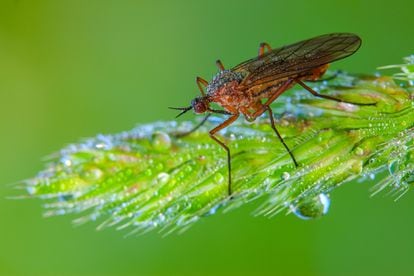A shadow suddenly envelopes an ant as it zigzags through the dry, thorny bushes in Granada’s Sierra Nevada mountains in southern Spain. The head casting the shadow belongs to Alberto Tinaut, who peers at the ant for a few seconds and quickly recognizes an old friend – Rossomyrmex minuchae – an insect that is slowly disappearing from the Iberian peninsula. Tinaut discovered this rare, slave-making ant in 1979 and didn’t see another one for more than 10 years. Now, it’s one of many insect species in decline causing alarm among the scientific community.
Tinaut and his partner, Francisca Ruano, are both zoologists and professors at the University of Granada (Spain). They say the reason Rossomyrmex is so hard to find is because it rarely leaves its nest. It’s a type of slave-making ant that raids the nests of other ant species and steals their brood to raise them as slave workers. That column of Proformica longiseta going down into a hole in the ground? It’s a bunch of slave ants working for the Rossomyrmex. There are only two ways to locate Rossomyrmex nests: vacuum a nest opening to try and suck up any specimens inside, or catch one during one of its rare trips outside between late June and early August. That’s when they usually set out on a raid of a Proformica anthill. “We spent a lot of time following them and were so excited when we actually observed a raid for the first time. We couldn’t tear ourselves away,” said Ruano. “Those raids are like one of our wars – human beings aren’t as special as we think we are.”
A slave-making ‘Rossomyrmex minuchaeant’ at the entrance to its nest in Spain’s Sierra Nevada mountains. This species is only found in southern Spain.Javier Aznar González de Rueda
Unlike other ant species, this slave-making ant doesn’t travel in single file leaving pheromone trails on the ground to mark the way. It travels alone, oriented by the sun. Tinaut and Ruano were also surprised to observe how a female Rossomyrmex scout would locate an ant nest to attack, and then guide the others to the site. Tinaut excitedly describes how after finding a target, the scout returned to its own nest and took Rossomyrmex ants one by one in its jaws to the attack site until they had assembled a full contingent of attackers. He smiled widely as he told us how just a few months ago, he spotted a Rossomyrmex ant returning from an attack carrying a Proformica larva in its mouth. He then followed the little ant back to the Rossomyrmex nest and marked it with a small stake labeled with a code. Tinaut says the 40-50 Rossomyrmex anthills they regularly monitored dwindled to just three over the years. “I feel helpless because there’s no way to fix this problem,” he said. Although there is no overall decline in Spain’s 300 ant species, Tinaut believes Rossomyrmex’s endangerment is caused by climate change. “The problem with [studying] biodiversity is that I only know these ants are disappearing because we have been watching them for so long. But what about all the other insects we know nothing about?”
The UK’s Royal Entomological Society says that about one million insect species have been identified worldwide, and estimates that there may be as many as 10 million species overall. Jorge Lobo, an entomologist with Madrid’s National Museum of Natural Sciences says that more than 34,000 insect species have been identified in Spain, comprising the vast majority of the country’s terrestrial fauna. But Lobo estimates that another 20%-50% have not yet been identified, a number that varies depending on the use of molecular techniques and exhaustive sampling. Most of Spain’s insects are Coleoptera (beetles), Hymenoptera (bees, wasps, ants), and Diptera (flies, mosquitoes, horseflies). They are so numerous, and the species have such radically different ecological attributes that some scientists question whether it makes sense to analyze them as a whole. Nevertheless, many studies have been published warning of the sharp decline in insect species all over the planet.
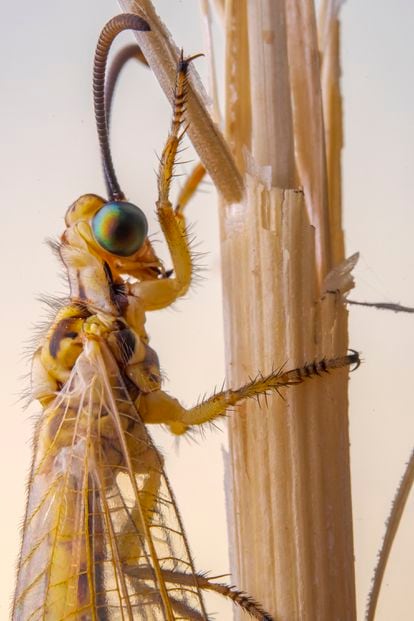 Adult antlion (‘Myrmecaelurus trigrammus’). Equipped with strong jaws, these insects dig conical holes in the ground to hide in wait for prey.Javier Aznar González de Rueda
Adult antlion (‘Myrmecaelurus trigrammus’). Equipped with strong jaws, these insects dig conical holes in the ground to hide in wait for prey.Javier Aznar González de Rueda
“Insect decline is patently clear and very serious,” said Lobo, “and it is caused by the increased use of pesticides and agrochemicals, coupled with climate change and ecosystem disruption.” One of the main difficulties in determining the extent of the problem is that much is still unknown about insects. Tinaut and Ruano’s slave-making ant is an example of how difficult it can be to thoroughly study a single species; consequently, studying thousands of different species seems impossible. There are no long-duration records that can be used to analyze the evolution of a species, not even for butterflies, one of the most extensively studied types of insects. Every time scientists think that every member of a small group like the odonata (flying insects like dragonflies) has been identified, a new species is discovered. In 2020, the Onychogomphus cazuma dragonfly was identified for the first time in eastern Spain.
The buzzing sound that sounds like a miniature helicopter is from a black beetle – Scarabaeus sacer – the largest coprophagous (feeds on the excrement of other animals) beetle on the Iberian peninsula. The armor-plated insect lands on the fine sand of the Doñana National Park (southern Spain), and is quickly joined by another. Soon there are dozens of these beetles attracted by the irresistible smell of cow dung spread on the ground by José Ramón Verdú (University of Alicante, eastern Spain). The immediate response by so many of these beetles is unusual nowadays, says Verdú. “You don’t see this many beetles anywhere else in Spain except here in Doñana,” he said.
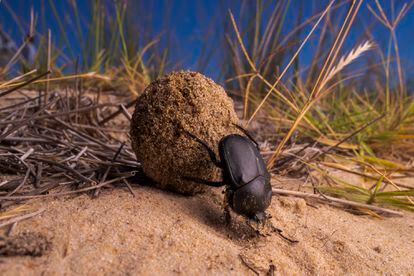 A ‘Scarabaeus sacer’ dung beetle pushes a pellet of cow dung in Doñana National Park, one of the few places in Spain where large numbers of these insects can be observed. Javier Aznar González de Rueda
A ‘Scarabaeus sacer’ dung beetle pushes a pellet of cow dung in Doñana National Park, one of the few places in Spain where large numbers of these insects can be observed. Javier Aznar González de Rueda
The dung beetles are only found in large numbers in one area of the national park – the Doñana Biological Station land preserve where deworming cattle with ivermectin is prohibited. Verdú’s experiments over the last 10 years have proven a direct relationship between this widely used livestock drug and the decline in the numbers of dung beetles that feed on the feces of cattle treated with ivermectin. Verdú says that when the beetles ingest droppings with traces of ivermectin, their motor and sensory capabilities diminish severely. Fields where beetles once rapidly cleared the cow dung now remain covered in droppings. Verdú recently inspected Ordesa y Monte Perdido National Park (Huesca, northern Spain) and found very few dung beetles. He even extracted dead specimens from dung piles. “It’s very sad outside of Doñana National Park,” he said. “Chemicals are the main reason for the decline of these insects.”
The gradual eradication of Scarabaeus sacer, a beetle considered sacred by the ancient Egyptians, is not just a loss for entomologists. Livestock dung accumulation has various negative impacts on soils and the environment. Australia is actually importing coprophagous beetles to combat pasture deterioration and fly overbreeding because the native beetle population is unable to decompose all the cattle excrement. It’s often overlooked how insects provide many essential services such as plant pollination – the propagation of pollen for plant reproduction. Scientific studies have been warning for over a decade about the decline of bees and other pollinators, a major concern because of the negative impacts on wild plants and crops.
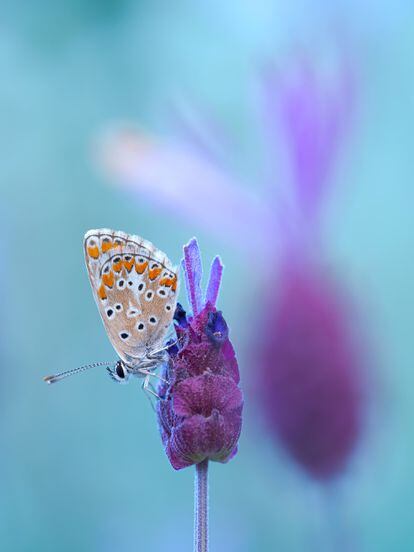
Professor Concepción Ornosa (Complutense University of Madrid) has studied the decline of bumblebees – “the best pollinators” – in the Pyrenees mountains (northern Spain and southern France), both in number of species and population size. “It’s been observed all over the world – pollinators are in fact disappearing,” said Ornosa. Other studies have found the opposite is true, but only in some very well-preserved areas like the Cazorla mountain range (Jaén, southern Spain). Carlos M. Herrera, an ecologist with the Spanish National Research Council says that much of the scientific literature on insect decline comes from Germany, the United Kingdom and the United States, which are “heavily populated and anthropized areas with a lot of habitat destruction and intensive agriculture. What I found here in Cazorla, a huge area with no pesticide impacts, is that climate change is having a detrimental effect on some pollinators, but others are doing well.” Herrera says that although bumblebees are the principal pollinators in the Pyrenees and Cantabrian mountain ranges, small bees like the genus Andrena are much more important in the Mediterranean ecosystem. “To give you an idea, we have 200 bee species in Cazorla alone, many more than in the entire United Kingdom,” said Herrera. “Countries like Germany do have reason to be very concerned because insects are declining catastrophically even in protected areas, but that doesn’t apply to us.”
Cell phone photo dated May 30, 2022, 1.31pm, Madrid: Lucanus cervus species photographed by Antonio Ordóñez. The Lucanus cervus has enormous jaws that look like deer antlers; hence its name – the stag beetle. The males fight over the females by using their pincer jaws to grab their foes and throw them out of trees. Antonio Ordóñez studied political science and works in communications, but he’s also an amateur entomologist who manages a crowdsourced website for biodiversity photography and information. Ordóñez says that most of the available data on insects doesn’t come from professional researchers, but from teachers, lawyers, economists, doctors or other people with an interest in arthropods. He created Biodiversidad Virtual (Virtual Biodiversity) in the 1990s as a platform for Europeans to upload digital photos of insects. It has become a reference for the Spanish Entomological Society, and its photos and data have been cited in nearly 600 scientific articles. “We were pioneers at the time, but the current phenomenon of crowdsourcing biodiversity data using mobile apps is amazing,” said Ordóñez. The most recent innovation is the incorporation of artificial intelligence. “Over the years, this movement provided knowledge about the biological distribution of species. Now these millions of data points are being fed into artificial intelligence systems – the famous deep learning systems – that are learning to identify flies, butterflies, beetles, plants, flowers… all contributed by ordinary people.”
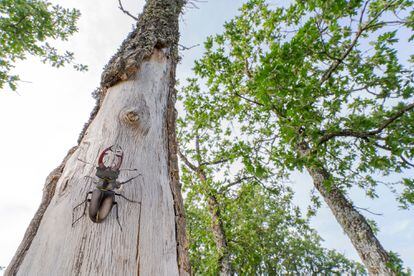
The participation of amateur entomologists was also key to one of the first studies to sound the alarm about declining insect populations. In 2017, the German PLOS ONE journal published a study that reported a 75% drop in the number of flying insects living in protected areas over a 27-year period, triggering references to an “insect Armageddon” and “insect apocalypse.” The study analyzed data collected over nearly 30 years by members of Germany’s Krefeld Entomological Society. Martin Sorg, the entomologist who curates the Krefeld collection, said: “Armageddon is defined as a sudden cataclysm caused by some divine or geological force. The biodiversity damage we are measuring is a slow process of human-inflicted degradation, extirpation and extinction of regional species over decades and centuries. Serious journalists and scientists should only use such terms if the definition matches the reality.”
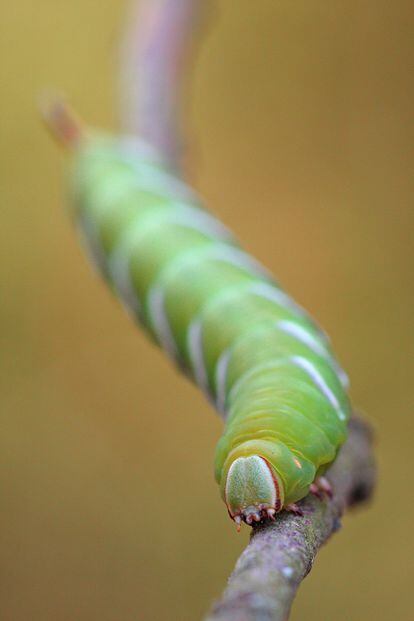
While stag beetles seem to be faring better in Spain than slave-making ants, dung beetles and bumblebees, information about these insects is also lacking. Marcos Méndez, an expert on European stag beetles, said: “I sleep well at night because the data we have on Lucanus cervus in the Iberian peninsula shows no signs of a sharp population decline. This insect’s situation is much more concerning as you go further north in Europe.” However, Méndez deplores the scarce data available about insects, which is much less than the available data about birds, whales and lynxes.
There are more than 700 different land quadrants measuring a total of 27,000 square miles (70,000 sq km) on the Iberian peninsula where Lucanus cervus has been observed. To obtain an accurate understanding of the status of this insect, updated data from every quadrant is needed. “I can’t spend my whole life going to each quadrant every year. It’s impossible, really impossible, for the people I manage to collect data every year in all of those 700 quadrants,” said Méndez. “With luck, I receive data for 70 or 80 quadrants in a single year, if everything goes well. It would take me 10 years to collect data for the entire area.” In an effort to better deal with this mammoth task, they have been trying since 2016 to expand a network of European volunteers to collect data every summer.
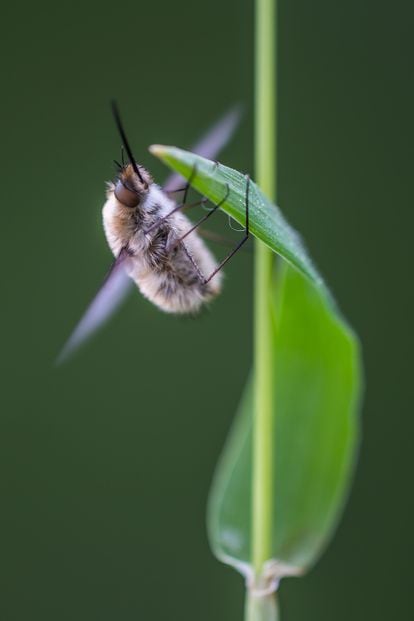
Amateur contributions have become increasingly important in entomology, and some amateurs have become the leading experts on certain species. The 2020 discovery the Onychogomphus cazuma dragonfly exemplifies the need for active amateur participation. Cecilia Díaz, a Castilla-La Mancha regional government official and one of the amateur entomologists who made the discovery, says it all happened by chance when she and two friends met one day to talk about their mutual interest. “Our friend Javier told us that there were some very rare dragonflies there, and then when we saw one resting on Nuria’s hand – that was really special,” she said. “It was difficult for us to confirm that it was a new species, because although we could do the taxonomy part ourselves, we needed help from professionals for the molecular analysis.” It was an extraordinary but bittersweet discovery since the newly identified species “seems to have little future.”
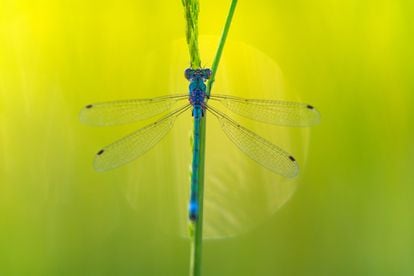
Despite the collective efforts of amateurs, the world of arthropods is too vast even for an army of volunteers. One of the main challenges is that most amateur insect lovers prefer to hunt for showier species. Nacho Cabellos is a mathematics teacher and entomology buff who loves flies. “It may seem strange, but I really like Diptera – there are more than 6,000 species of flies on the Iberian peninsula,” he said. Cabellos also collaborates with Biodiversidad Virtual to plan and conduct site visits called “testings” to protected natural areas. They try to photograph as many insects as possible and collect valuable information that would otherwise be very difficult to obtain. “When we first started sending reports to Cabañeros and Tablas de Daimiel national parks in central Spain, they didn’t have a single piece of information about any insects other than dragonflies and butterflies.” Cabellos says his affinity for flies is not shared by most amateur entomologists. “I’d say 99% of them prefer photographing butterflies and dragonflies because they are aesthetically beautiful; very few go after homely springtail bugs.”
